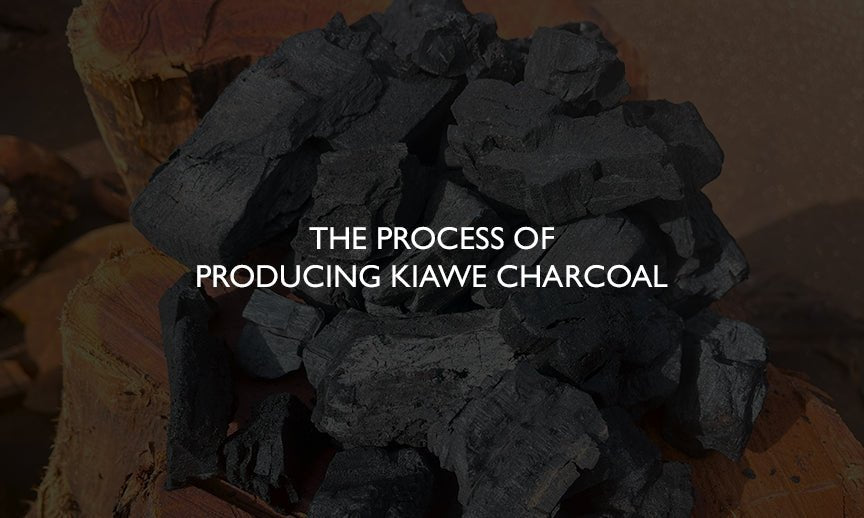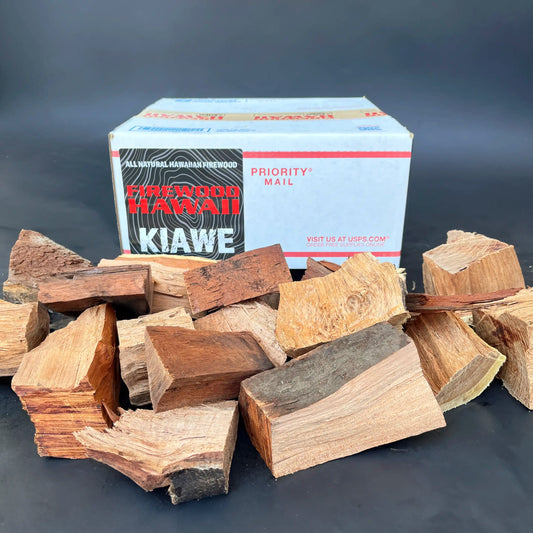
The Process of Producing Kiawe Charcoal: Behind the Scenes
Share
There is an undeniably unique allure to the sweet and smoky flavor with subtle floral and fruity undertones that Kiawe wood imparts to food, a flavor cherished by BBQ enthusiasts and culinary experts across the world.
The very heart of this flavor lies in Kiawe charcoal, a premier choice for cooking or smoking.
So, have you ever wondered how Kiawe charcoal is produced?
Let's take a behind-the-scenes tour of the fascinating process that turns raw Kiawe wood into premium charcoal.
Kiawe Wood: A Prized Possession
Native to Hawaii, Kiawe (Prosopis pallida) is a type of mesquite tree that yields dense and hardwood, lending itself perfectly to the creation of high-quality charcoal.
Harvesting Kiawe wood is the first step in the process, which involves careful selection of mature trees that are suitable for charcoal production.
Step 1: Cutting and Drying the Wood

Once suitable Kiawe trees are identified, they are cut into smaller, manageable pieces.
The next critical step is drying.
Freshly cut Kiawe wood contains high moisture content, which needs to be reduced.
The drying process can take several weeks to months, depending on the weather conditions, until the moisture content is brought down to around 20%.
Proper drying ensures clean, smoke-free burning.
Step 2: The Kiln Process
After drying, the Kiawe wood pieces are loaded into a specially designed kiln.
The kiln, generally made from steel, is airtight and built to withstand high temperatures.
The process of turning the wood into charcoal involves heating the wood in the absence of oxygen, a process known as pyrolysis.
The heat breaks down the wood, leaving primarily carbon and minimal residual ash.
Step 3: The Charcoal Stage
As the kiln heats up, the wood starts to turn into charcoal.
Initially, it emits a blue smoke, an indication of moisture and volatile compounds being released.
When the smoke turns from blue to clear, it is a sign that the transformation into charcoal is complete.
Step 4: Cooling Down
After the charcoal is formed, it's crucial to allow it time to cool down.
The kiln is sealed off, cutting the supply of air to avoid combustion and let the charcoal cool naturally for up to 48 hours.
After cooling, the charcoal is removed from the kiln.
Step 5: Sorting and Packing
The final step in the production process is sorting the charcoal.
It is categorized into lumps and smaller pieces, and any residual ash is cleaned off.
The charcoal is then packed into bags, ready to deliver the rich, smoky flavor of Kiawe to kitchens and grills across the globe.


Conclusion
The journey of a Kiawe tree from a tropical Hawaiian forest to a bag of high-quality charcoal is an intricate process that involves time, patience, and precision.
The next time you grill using Kiawe charcoal, you will not only savor the unique flavors but also appreciate the hard work and dedication that goes into making every piece of charcoal.
After all, it's not just about cooking; it's about celebrating a tradition and heritage that brings people together, one smoky, flavorful meal at a time.








